P-40K-1/5 Warhawk ‘Short Fuselage’ (SH72379)
1:72 Special Hobby
First flying before the outbreak of WWII, the Warhawk was a development of the P-36 Hawk, and although it was never the fastest fighter in the sky, it was a sturdy one that took part in the whole of WWII in American and Allied hands, with large numbers used by Soviet pilots in their battles on the Eastern front. The various marks garnered different names such as Tomahawk and Kittyhawk, so it can get a mite confusing if you're not familiar with the type. It was unable to keep pace with the supercharged Bf.109, but was used to great effect in the Far East and Africa, which may have assisted in the feeling that it was a second-string aircraft of inferior design, when this actually wasn't the case – certainly not to the extent inferred.
It was robust, cheap to make, and easy to repair, although its high-altitude performance dropped off somewhat. The early marks were under-armed with just two .50 guns firing through the prop from the top of the engine cowling and a pair of .303s in the wings, but later models benefited from improved armament. The B model was a revision of the initial airframe with lessons learned from early production, self-sealing fuel tanks and armour in critical parts of the airframe, although this extra weight did have an impact on performance. The -D was a partial re-design, eliminating the nose guns, narrowing the fuselage and improving the cockpit layout and canopy. In British service it was known as the Kittyhawk Mk.I, but only a small number were made before the -E replaced it with a more powerful Allison engine, and an extra pair of .50cl machine guns in the wings bringing the total to six, but even that wasn’t sufficient to let it keep up with the opposition. It wasn't until the –F model that the Allison engine was replaced by a license-built Merlin that gave it better high-altitude performance and a sleeker chin. The -K was an Allison engine version with a shorter fuselage, retaining many of the earlier visual cues just to confuse us, known at the Kittyhawk Mk.III in British and Commonwealth service.
The Kit
This is a rebox of a recent tooling from Special Hobby with new parts to depict this variant, and it arrives in a red/white/grey themed top-opening box with a painting of the subject after a successful engagement with a late mark Bf.109, which is banking away whilst trailing smoke from its engine. Inside the box are three sprues in grey styrene, a clear sprue that’s separately bagged, a tiny bag of two grey resin parts, a wide decal sheet, and the A5 portrait instruction booklet printed on glossy paper in colour. Detail is good, with finely engraved panel lines, raised and recessed details around the airframe and a few spare parts that can stay on the sprues, which are marked with a red X on the sprue diagram.
Construction begins with the pilot’s seat, mounting it on a frame, then it is attached to the bulkhead and given a set of four-point decal seatbelts, after which it is set aside for a few steps. The fuselage sides are fitted with sidewall inserts, with sections further forward painted silver as they form part of the air intake pathway, adding the core with three circular intakes inside, and the intake lip in front once the fuselage halves are together. The rear bulkhead with seat and the instrument panel with two decals for the dials are trapped between the two halves of the fuselage as it is closed. A small circular shape on the cockpit side is removed and smoothed over at this stage too.
Moving on to the wings, the full-span lower has the perimeter around the bay openings painted, as are the side-walls that are glued in the recesses, and the roof that is moulded into the upper wing half, adding a landing light under the port wing from within. The cockpit floor is moulded into the centre of the upper wing, and that is also painted the same colour, so quite convenient while you have the paint out. The control column and another lever are inserted into the floor, then the wings can be joined to the fuselage, taking care not to knock the stick off as you do so. The elevators are each a single part that affix with the usual slot and tab method, with a separate rudder that can be posed deflected if you wish. The exhaust stubs are supplied as inserts with one per side, and are far too small to drill out unless you have the world’s steadiest hands.
The last option involves selecting open or closed cooling gills behind the radiator housing, inserting a pitot probe in the port wingtip, and painting the moulded-in lights on each tip above and below the wing. The main gear struts have an additional bracing leg fixed at the top, then the tripod arrangements are inserted into the sockets in the bay, adding the two doors to each side of the bays, and another two that are linked by a cross-brace in the tail bay and a single part strut/wheel to complete the undercarriage. The three-bladed propeller is moulded as a single part that is trapped between a back-plate and spinner, with a short spindle on the back that slides into the hole in the front of the fuselage. You then have a choice of two loads under the centre of the fuselage, consisting of a fuel tank, or a bomb for ground-attack operations. Each option is made from two halves plus four braces for the fuel tanks, and two for the bomb. Flipping the model over allows the last step to be completed, fitting the coaming and gunsight into the cockpit, adding the windscreen with rear-view mirror, and the two side windows into the scalloped sections behind the canopy, followed by the sliding canopy, which can be posed open or closed as you like it by using a different part for each option. One decal option has a two-part resin D/F loop aerial and fairing added to the spine behind the cockpit, with its location shown during step 6 of the instructions.
Markings
There are four options available on the decal sheet, three US options having bright personalisations around the nose area, while the other option is a Lend/Lease airframe in Soviet service, replete with red stars. From the box you can build one of the following:
P-40K-1 (42-46040) White #13, Pilot 1st Lt. Robert Johnson ‘Jay’ Overcash, 643FS, 57FG, Based at Hani Main, Tunisia, May 1943
P-40K White #23, Lt. Nikolai Federovich Kuznetsov, 436 Fighter Aviation Regiment, 239 IAD, 6 Air Army, Lake Seliger, North Western Front, Winter 1943
P-40K-5 (42-9768) White #255, Maj. Edward ‘Big Ed’ M Nollmeyer, CO of 26FS, 51FG, Kunming, China, December 1943
P-40K, White #15, 25FS, 51FG, Assam Valley, India 1944
The decals are printed using a digital process and have good registration, sharpness, and colour density, with a thin gloss carrier film cut loosely around the printed areas. This means that the carrier film on their decals can be coaxed away from the printed part of the decal after they have been applied, effectively rendering them carrier film free, making the completed decals much thinner and more realistic, and obviating the need to apply successive coats of clear varnish to hide the edges of the carrier film. It’s a great step further in realism from my point of view, and saves a good quantity of precious modelling time into the bargain.
Conclusion
The P-40 is an interesting and oft overlooked aircraft that played some important roles in WWII, as evidenced by the number of notable pilots that gained their reputation in this doughty fighter. This is a well-detailed kit of a later variant, and has some interesting decal options that make it an appealing prospect.
Highly recommended.
Review sample courtesy of

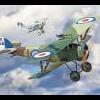


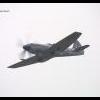
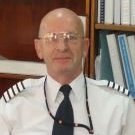


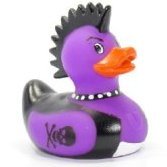

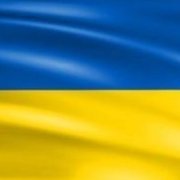
.thumb.jpg.a1642e430572922c3befa12f87efb548.jpg)

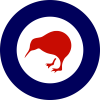
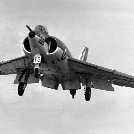


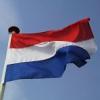
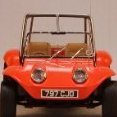
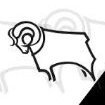


a.thumb.jpg.58d92d116b0315dc55d352fd191d65e4.jpg)